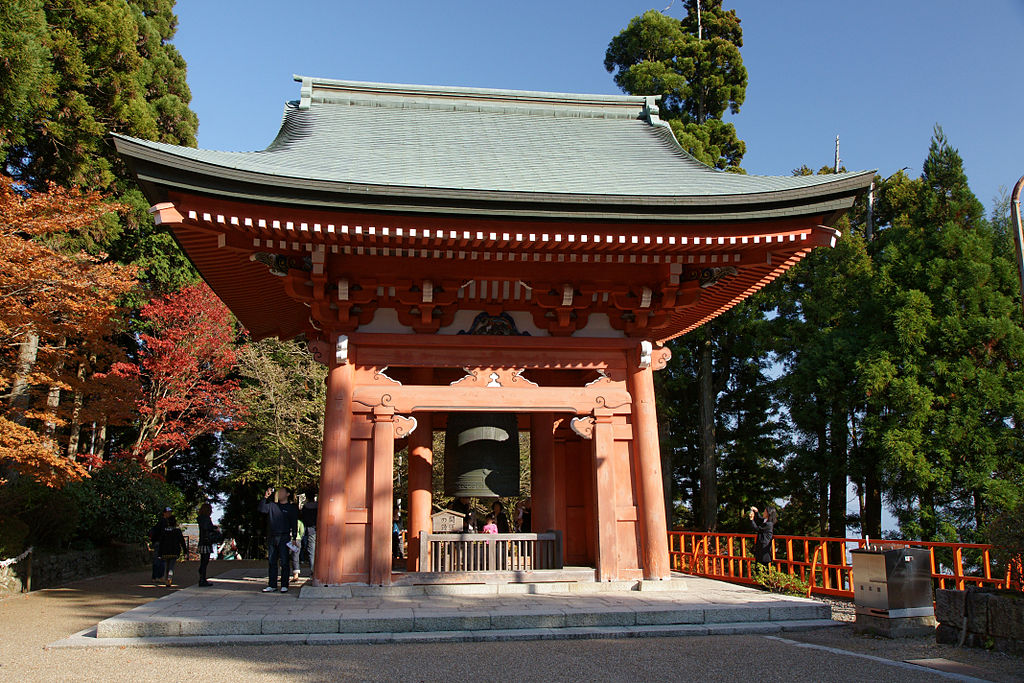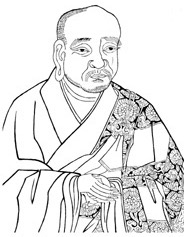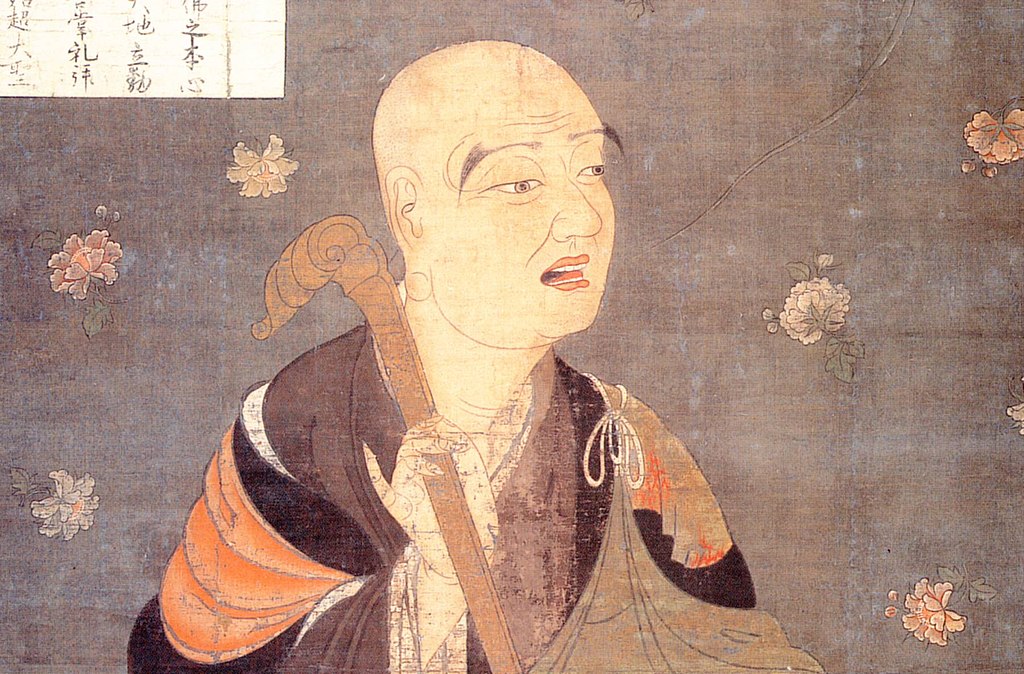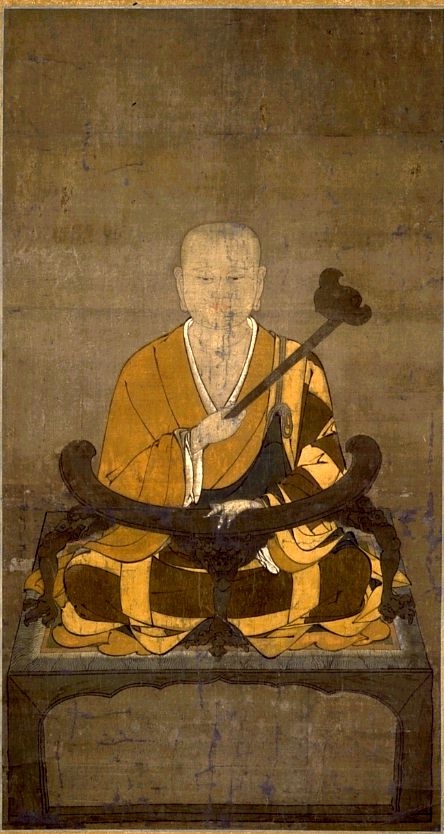
Jacqueline Stone writes: “The original enlightenment (hongaku) discourse flourished for some six hundred years, from the Heian through the mid-Togukawa periods.” “All the significant features of hongaku discourse – the direct accessibility of Buddhahood, the concern for people of limited capacity, the “shortening of the path,” the equation of worldly phenomena with Buddhist truth, the weakening of the causal links between moral conduct and liberation – can be traced to the Heian period … In one sense, it is still with us, for the doctrinal orthodoxy of many Japanese Buddhist traditions today retains a hongaku orientation in holding that liberation is accessed in the act of practice.”
Compared with the concept of Buddha-nature as presented in the Tathagatagarbha movement, “original enlightenment” is no longer simply a potential innate in deluded beings to be realized through cultivation and the eradication of defilements but the true status of all phenomena just as they are …It entailed a metaphysical premise about concrete phenomena instantiating ultimate reality, which exists nowhere apart from them.” If we can only access ultimate reality through phenomena, new practices using “forms” such as mantra chanting and visualisations, could be designed to “actualise” our original enlightened nature.
It was in Japanese Buddhism that the doctrine of original enlightenment reached its full development, but the scholar-monks of the Tendai school did not start from scratch. In its earliest forms, it can be found on the Asian continent, in particular in three teachings – the Awakening of Faith in the Mahayana, the Huayan Doctrine as systematized by Fazang, and the writings of Zhiyi, the founder of the Tiantai school.
The Awakening of Faith in the Mahayana

The Awakening of Faith in the Mahayana is traditionally attributed to Asvaghosa (c. 80-c. 120 CE), an Indian Buddhist philosopher. The text, however, is regarded in academia as a Chinese apocryphon written in 6th century CE. Understood in this way, it is seen as an attempt at making sense of the various teachings that had recently entered China, paralleling a similar undertaking by Zhiyi (538–597), the founder of the Tiantai school. The Awakening of Faith is succinctly referred to as the text that conflated the concept of Buddha-nature and Yogacara’s concept of alaya-consciousness, a premise that has shaped the teachings of all East Asian schools of Buddhism.
After a rather lengthy introduction, the main text of the Awakening of Faith, starts in Part Three – Chapter One as follows:
Revelation of True Meaning: One Mind and Its Two Aspects
“The revelation of the true meaning [of the principle of the Mahayana can be achieved] by [unfolding the doctrine] that the principle of One Mind has two aspects. One is the aspect of Mind in terms of the absolute (tathata; suchness), and the other is the aspect of Mind in terms of phenomena (samsara; birth and death). Each of these two aspects embraces all states of existence. Why? Because these two aspects are mutually inclusive” (Hakeda translation).
Stone explains that the Awakening of Faith “represents part of a larger attempt on the part of Chinese Buddhists to clarify the relation between the mind, understood as originally pure, and ignorance.” How could “the originally pure, enlightened mind intrinsic to all sentient beings, conceptualized as the ‘womb’ or ‘embryo’ of Buddhahood” [Tathagatagarbha or Buddha nature] which “in ordinary worldlings, … is the potential for enlightenment and in Buddhas, the fully realized truth or the dharma-kaya” also be the source of illusion and suffering, in other words, the unenlightened view of samsara?”
“Within the Indian Mahayana, this question had been addressed most explicitly by the Yogacara doctrine of the alaya-vijnana or “store-consciousness.” This level of mind is imagined as the repository in which all past experiences, wholesome and unwholesome, pure and defiled, are deposited as “seeds” (bija) that shape future deeds. Ignorance has its source in the defiled seeds that have accumulated in the store consciousness since the inconceivably distant past.” Whereas we usually believe our consciousness to mirror things existing in a world perceived as external to us, this is not so. Karmic seeds arising from the alaya-consciousness cause us to “edit highlights” in our field of perception, i.e., select what is of interest to us, or threatens us or disgusts us, thereby distorting our view of the world. We do not realise that what we see is not the world outside, but our reorganisation of it, manufactured in the alaya-consciousness. It had been believed that the extirpation of the defiled karmic seeds was a process that required many successive lifetimes.
Stone then writes that “many Chinese Buddhists of the Sui (581-617) and Tang (618-907) dynasties were dismayed by so remote a vision of liberation and sought to reimagine it in more accessible ways. In approaching the problem, the Awakening of Faith subsumes the alaya-vijnana concept within that of the tathagata-garbha by redefining the former as none other than the one pure mind as perceived through unenlightened consciousness.” This last statement is key because it amounts to a claim that the alaya-consciousness is not different from the pure mind, and it is only our unenlightened minds that see it as impure, thereby opening up the “ever-present possibility of transforming that mind into the mind of awakening.”
The Huayan Doctrine
“Japanese hongaku thought would be indebted not only to the specific category of “original enlightenment” set forth in the Awakening of Faith, but more broadly to the great totalistic systems of Chinese Buddhist thought, especially those of Hua-yen and T’ien-t’ai, which envision the world as a cosmos in which things, being empty of independent existence, interpenetrate and encompass one another. These systems are both ontological, in explaining all concrete phenomena (shih) as nondual with truth or principle (li), and soteriological, in showing liberation to consist of insight into this unity.”

Fazang (643-712), the founder of the Huayan school, wrote a commentary on the Awakening of Faith, and recognised the text as a basic source for his own school, in addition to its central scripture, the Avatamsaka Sutra. For those who are not familiar with the Huayan doctrine, it can be summed up as an expansion of the concept of co-dependent origination, where all phenomena are described not only as interdependent, but also as including each other. Not only does the whole include all the parts, but every part of the whole reflects the pattern of the whole, much like the DNA in every cell of my body contains the blueprint for all the cells of my body. The image traditionally used to illustrate the doctrine is Indra’s Net, where each jewel is reflected in all the other jewels, while reflecting these other jewels.
Stone writes: “Hua-yen thought sees all phenomena as expressions of an originally pure and undifferentiated one mind … Often cited in Japanese hongaku-related literature is Fa-tsang’s formulation of the two aspects of suchness. In his commentary on the Awakening of Faith, Fa-tsang interpreted the two aspects of the one mind as suchness that is absolute or unchanging and suchness that accords with conditions, equating them with principle (li) and phenomena (shih) respectively. Suchness in its unchanging, quiescent mode is the one pure mind; in its dynamic mode, responding to the ignorance that is the condition of sentient beings, it manifests the phenomenal world.”
“Notions of origination from the mind or suchness are often illustrated with the metaphor of water and waves … When the water of true suchness or principle (li) is stirred by the winds of ignorance, the waves of differentiated phenomena (shih) arise, but the waves are no different in substance from the water … The teaching of origination from suchness in effect ground the arising of phenomena in the one pure mind and thus obliterates any ontological distinction between them. It is only because of adventitious nonenlightenment that deluded throughts appear, producing the distinction of subject and object and thus leading … to craving, attachment, and enmeshment in samsaric misery. Liberation lies in discerning that the differentiated phenomena of the samsaric world are, in their essence, no different from the one mind and thus originally pure.”
Stone concludes that, as was the case for the Awakening of Faith that so deeply influenced Fa-tsang’s thought, “the nonduality of principle (li) and phenomena (shih) as set forth in much of Hua-yen thought is heavily weighted toward the former. The mind is original, pure, and true, while phenomena are in contrast unreal, arising only as the one mind is perceived through human ignorance.”
Zhiyi and the Tiantai School

First on Zhiyi’s (538-597) mind when he founded the Tiantai school in the 6th century, was to work out a doctrine to organise into a coherent and meaningful system, the Buddhist teachings that were still being translated from Sanskrit into Chinese during his time. He did, however, focus primarily on the Lotus Sutra, which he saw as containing the “final” teaching of Sakyamuni Buddha, what, according to a classification Zhiyi worked out, the Buddha had taught in the last eight years of his life. He also focused on the writings of the Madhyamaka school as the basis for his approach to doctrine and practice, showed no particular interest in the Tathagatagarbha movement, and was possibly unaware of the Awakening of Faith and the Huayan teachings, which were still in the making at the time.
It is in the Japanese Tendai school that the concept of original enlightenment later developed to its highest degree of sophistication. So it may come as a surprise to find that this concept did not appear as a category in early Chinese Tiantai. “Nonetheless,” Stone writes, “the T’ien-t’ai tradition represents a crucial antecedent to the development of Japanese hongaku [original enlightenment] thought. In contrast to Hua-yen emphasis on all things arising from the mind, early T’ien-t’ai … denies that the mind is a pure, undifferentiated cosmic principle from which all things arise.”
“In the words of Chih-i [Zhiyi],” Stone adds, “One may say neither that the one mind is prior and all dharmas posterior nor that all dharmas are prior and the mind posterior … All one can say is that the mind is all dharmas and all dharmas are the mind. Therefore the relationship is neither vertical nor horizontal, neither the same nor different.”
Whereas both the Awakening of Faith and the Hua-yen tradition approached the vexing issue of “why an originally pure mind could also be the source of the unenlightened view of samsara?” using the Tathagatagarbha teachings and the concept of Buddha nature as a starting point, Zhiyi’s thought was rooted in Madhyamaka’s emphasis on the nonduality of absolute and conventional truth.
One of Nagarjuna’s central teachings had been the Two Truths: conventional truth and ultimate truth do not oppose, but instead, mutually imply each other. The conventional world of our everyday lives is made up of “things” which arose from co-dependent origination, and lack intrinsic existence. It should therefore be seen as not different – non-dual – with the ultimate truth of emptiness. Zhiyi elaborated Nagarjuna’s Two Truths into his doctrine of the Threefold Truth, emptiness, conventional existence, and the middle, where emptiness and conventional existence are seen simultaneously. In Stone’s words: “By contemplating the phenomena of conventional existence as arising through dependent origination, one discerns that they are empty of self-nature; this move, termed “entering emptiness from conventional existence,“ frees one from attachment to samsaric existence. By a reverse discernment, “[re]entering conventional existence from emptiness,” one is freed from attachment to reified notions of emptiness and is able to reengage the myriad phenomena of the world in a soteriologically effective way. And by contemplation of the middle, one gains both discernments simultaneously the perspectives of “emptiness” and “conventional existence” being mutually illuminated but also negated as one-sided extremes. The status of “conventional existence” as the point from which one begins contemplation, and to which one “returns” for bodhisattva practice, reflects T’ien-t’ai’s emphasis on concrete particulars as instantiating ultimate truth: “Of every form and fragrance, there is none that is not the Middle Way.”
Stone quotes Tamura Yoshiro’s formula encapsulating the difference between Huayan and Tiantai thinking: “Hua-yen, Tamura says, moves from li (principle) to shih (phenomena), while T’ien-t’ai moves from shih to li, stressing that each particular as it stands encompasses the true aspect of reality.” Stone has described the development of the concept of original enlightenment in the Japanese Tendai tradition as “a rhetorical stance grounded in a philosophical commitment to collapsing any sort of distance between ultimate reality and the quotidian world, or between the Buddha and ordinary worldlings. How closely this ideal of “absolute” nonduality is approached becomes the standard for its own claim to superiority over other doctrinal positions.”
Source:
Jacqueline I. Stone – Original Enlightenment and the Transformation of Medieval Japanese Buddhism
